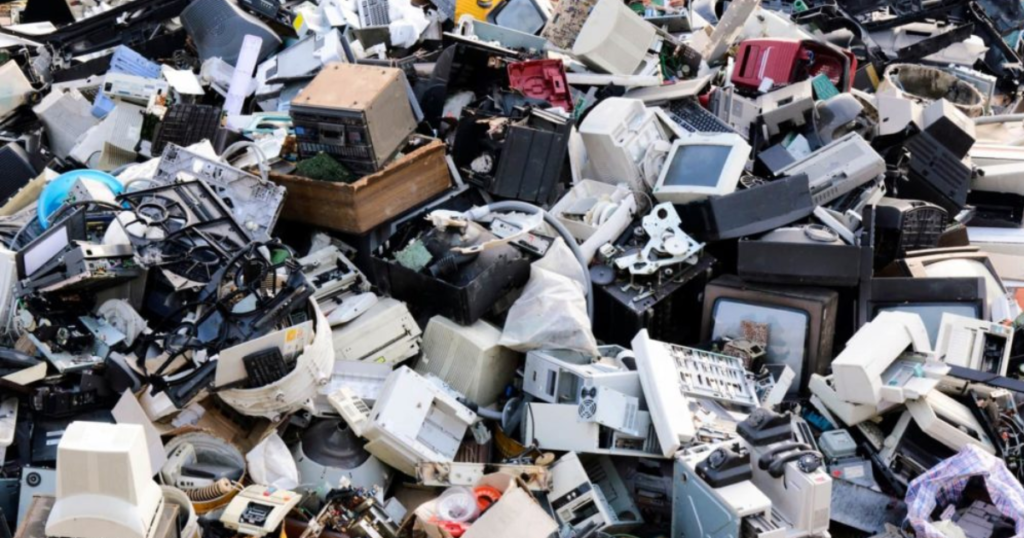Introduction
Technology has transformed our lives, making communication, business, and daily activities more efficient. However, this rapid advancement comes with a significant environmental cost. E-waste, or electronic waste, is growing at an alarming rate, while the energy consumption of digital infrastructure continues to soar. From the mining of rare materials to the disposal of outdated devices, the technology industry has a profound impact on the environment. This article explores the hidden costs of technology and potential solutions for a more sustainable future.
The Growing Crisis of E-Waste
E-waste refers to discarded electronic devices, including smartphones, laptops, televisions, and household appliances. As technology evolves rapidly, devices become obsolete quicker than ever, contributing to an ever-growing waste problem.
Alarming Statistics on E-Waste:
- The world generated over 50 million metric tons of e-waste in 2022, a number expected to rise.
- Only 20% of e-waste is formally recycled, while the rest ends up in landfills or is improperly handled.
- Some of the most hazardous components of e-waste include lead, mercury, cadmium, and brominated flame retardants, which can leach into the environment.
The Dangers of Improper E-Waste Disposal
- Toxic Pollution: When e-waste is dumped in landfills or incinerated, harmful chemicals contaminate soil, air, and water.
- Health Risks: Exposure to heavy metals and other toxins from e-waste can lead to severe health issues, including respiratory diseases and neurological damage.
- Illegal Exports: Many developed countries export e-waste to poorer nations, leading to environmental degradation and unsafe working conditions for informal recyclers.

The Energy Consumption of Digital Technology
Beyond e-waste, the technology sector is also a major consumer of energy. Data centers, cloud computing, and cryptocurrency mining require vast amounts of electricity, contributing to greenhouse gas emissions.
Key Areas of Energy Consumption:
- Data Centers
- Large-scale data centers power cloud storage, social media, and online services.
- Global data centers consume approximately 1% of the world’s electricity.
- Cooling systems account for nearly 40% of energy usage in these facilities.
- Cryptocurrency Mining
- Bitcoin and other cryptocurrencies rely on energy-intensive mining operations.
- The Bitcoin network alone uses more energy than some entire countries.
- Mining operations often rely on fossil fuels, worsening carbon emissions.
- Manufacturing and Supply Chains
- The production of electronic devices requires mining rare materials like lithium, cobalt, and rare earth elements.
- These materials are often extracted using unsustainable and environmentally damaging practices.
- Shipping and manufacturing processes contribute to pollution and deforestation.
Sustainable Solutions for E-Waste and Energy Consumption
Addressing the environmental impact of technology requires a multi-faceted approach. Governments, corporations, and consumers must work together to implement sustainable practices.
1. E-Waste Recycling & Circular Economy
- Right to Repair Laws: Governments should enforce laws allowing consumers to repair devices instead of replacing them.
- Extended Producer Responsibility (EPR): Manufacturers should be responsible for the collection and recycling of their products.
- Recycling Innovations: Advances in e-waste recycling, such as robotic dismantlers, can recover valuable materials more efficiently.
2. Energy-Efficient Technology
- Companies should invest in energy-efficient chips and processors that reduce power consumption.
- Data centers should adopt renewable energy sources, such as solar and wind power.
- AI and machine learning can optimize energy usage, reducing waste.
3. Green Manufacturing Practices
- Sustainable mining initiatives and ethical sourcing of raw materials should be a priority.
- Eco-friendly product designs, including biodegradable components, can reduce environmental impact.
- Companies should aim for zero-waste production by reusing and recycling materials.
4. Consumer Awareness & Responsibility
- Consumers should be educated about proper e-waste disposal and the importance of sustainable technology use.
- Choosing refurbished devices and supporting brands with eco-friendly practices can reduce demand for new electronics.
- Minimizing unnecessary energy consumption, such as turning off unused devices, can lower overall energy demand.
Conclusion
Technology has revolutionized modern life, but its environmental cost cannot be ignored. E-waste pollution and rising energy consumption are major threats to sustainability. By implementing responsible manufacturing, improving recycling efforts, and adopting energy-efficient practices, we can minimize the negative impact of technology on the planet. Governments, corporations, and individuals all have a role to play in ensuring a greener and more sustainable digital future.